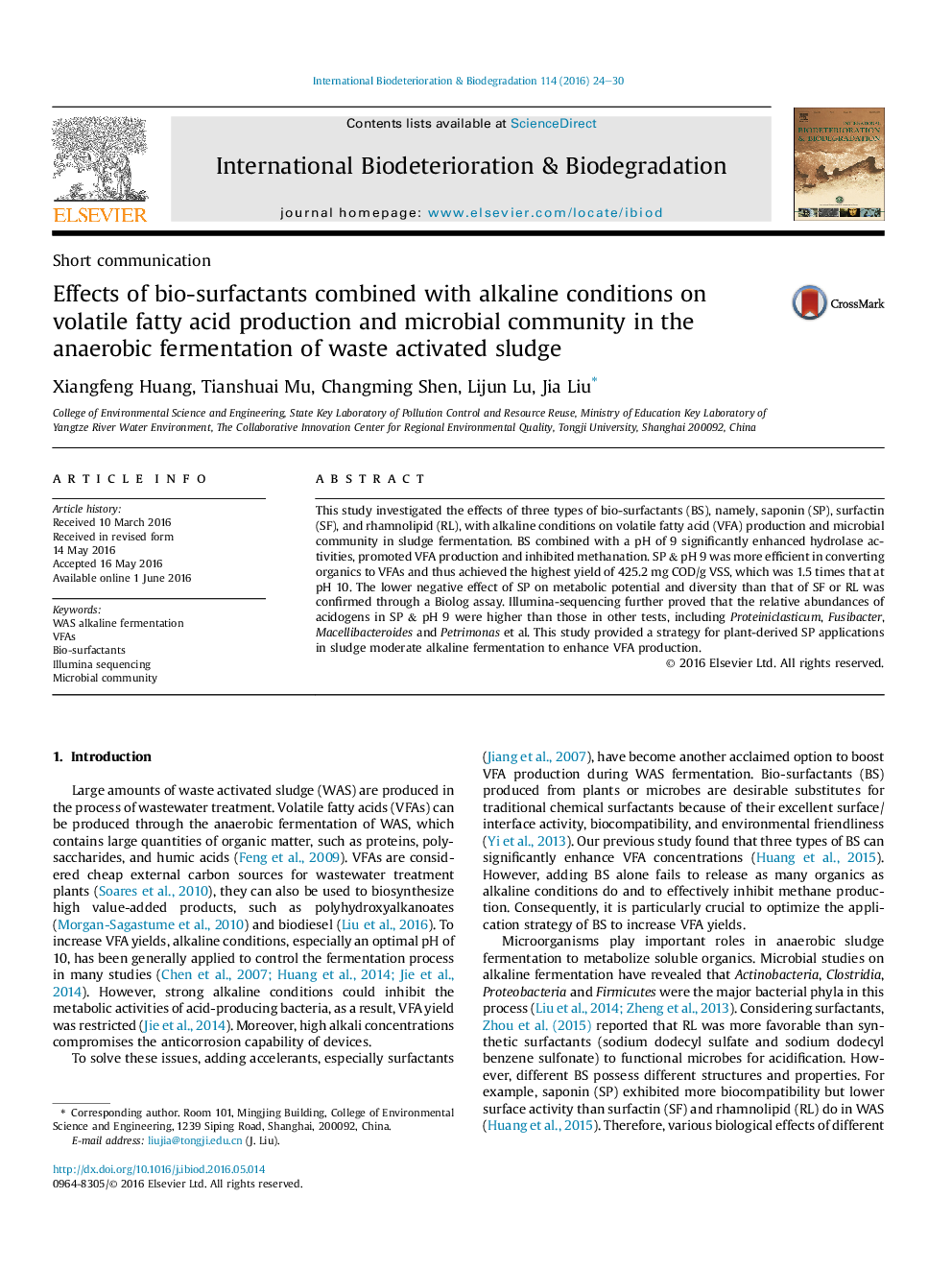| Article ID | Journal | Published Year | Pages | File Type |
|---|---|---|---|---|
| 4364124 | International Biodeterioration & Biodegradation | 2016 | 7 Pages |
•Bio-surfactants & pH 9 stimulated VFA production from WAS fermentation.•Bio-surfactants & pH 9 were optimal in organics conversion and hydrolysis.•Saponin & pH 9 achieved the highest VFA accumulation of 425.2 mg COD/g VSS.•Saponin & pH 9 maintained microbial metabolic ability.•The relative abundances of acidogens detected in Saponin & pH 9 were more abundant.
This study investigated the effects of three types of bio-surfactants (BS), namely, saponin (SP), surfactin (SF), and rhamnolipid (RL), with alkaline conditions on volatile fatty acid (VFA) production and microbial community in sludge fermentation. BS combined with a pH of 9 significantly enhanced hydrolase activities, promoted VFA production and inhibited methanation. SP & pH 9 was more efficient in converting organics to VFAs and thus achieved the highest yield of 425.2 mg COD/g VSS, which was 1.5 times that at pH 10. The lower negative effect of SP on metabolic potential and diversity than that of SF or RL was confirmed through a Biolog assay. Illumina-sequencing further proved that the relative abundances of acidogens in SP & pH 9 were higher than those in other tests, including Proteiniclasticum, Fusibacter, Macellibacteroides and Petrimonas et al. This study provided a strategy for plant-derived SP applications in sludge moderate alkaline fermentation to enhance VFA production.
Graphical abstractFigure optionsDownload full-size imageDownload as PowerPoint slide
